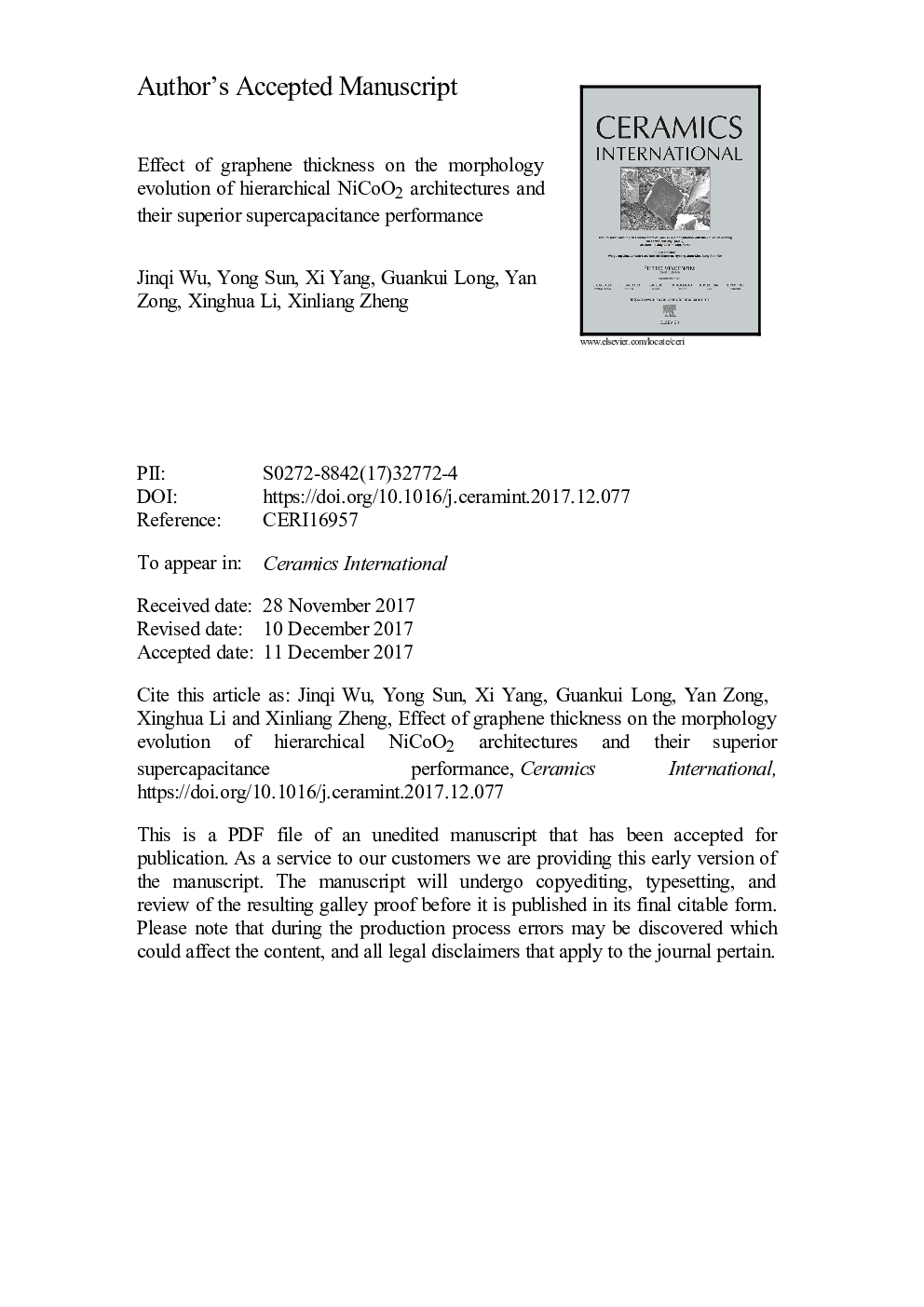| Article ID | Journal | Published Year | Pages | File Type |
|---|---|---|---|---|
| 7888182 | Ceramics International | 2018 | 33 Pages |
Abstract
The rational design of electrode materials with special hierarchical architectures which possess both high surface area and conductivity is significant to enhance the performance of supercapacitors. Herein, hierarchical NiCoO2 architectures assembled by ultrathin mesoporous nanosheets are in-situ grown on graphene@Ni foam (G@NF) by a template-free solvothermal route and subsequent annealing process, which is used as self-supported and binder-free supercapacitor electrodes. The effect of graphene thickness on morphology evolution of NiCoO2 is investigated. Benefiting from the synergistic effect between graphene with remarkable conductivity and hierarchical NiCoO2 architectures with high specific capacity, the NiCoO2/G@NF electrodes show greatly improved electrochemical performance compared to NiCoO2@NF and G@NF. The optimized NiCoO2/G@NF has a specific capacitance of 1220Â F/g at 1Â A/g. While the NiCoO2@NF and G@NF are only 565 and 151Â F/g, respectively. The optimized NiCoO2/G@NF remains 840Â F/g at 20Â A/g, revealing a remarkable rate performance (69% capacity retention from 1 to 20Â A/g). Moreover, an outstanding cyclic stability of 80% capacitance retention can be obtained after 5000 charge/discharge cycles at 10Â A/g, whereas the NiCoO2@NF is only 46.5%. These results suggest that the hierarchical NiCoO2 architectures/graphene hybrids are good candidates as effective electrode materials for supercapacitors.
Related Topics
Physical Sciences and Engineering
Materials Science
Ceramics and Composites
Authors
Jinqi Wu, Yong Sun, Xi Yang, Guankui Long, Yan Zong, Xinghua Li, Xinliang Zheng,
